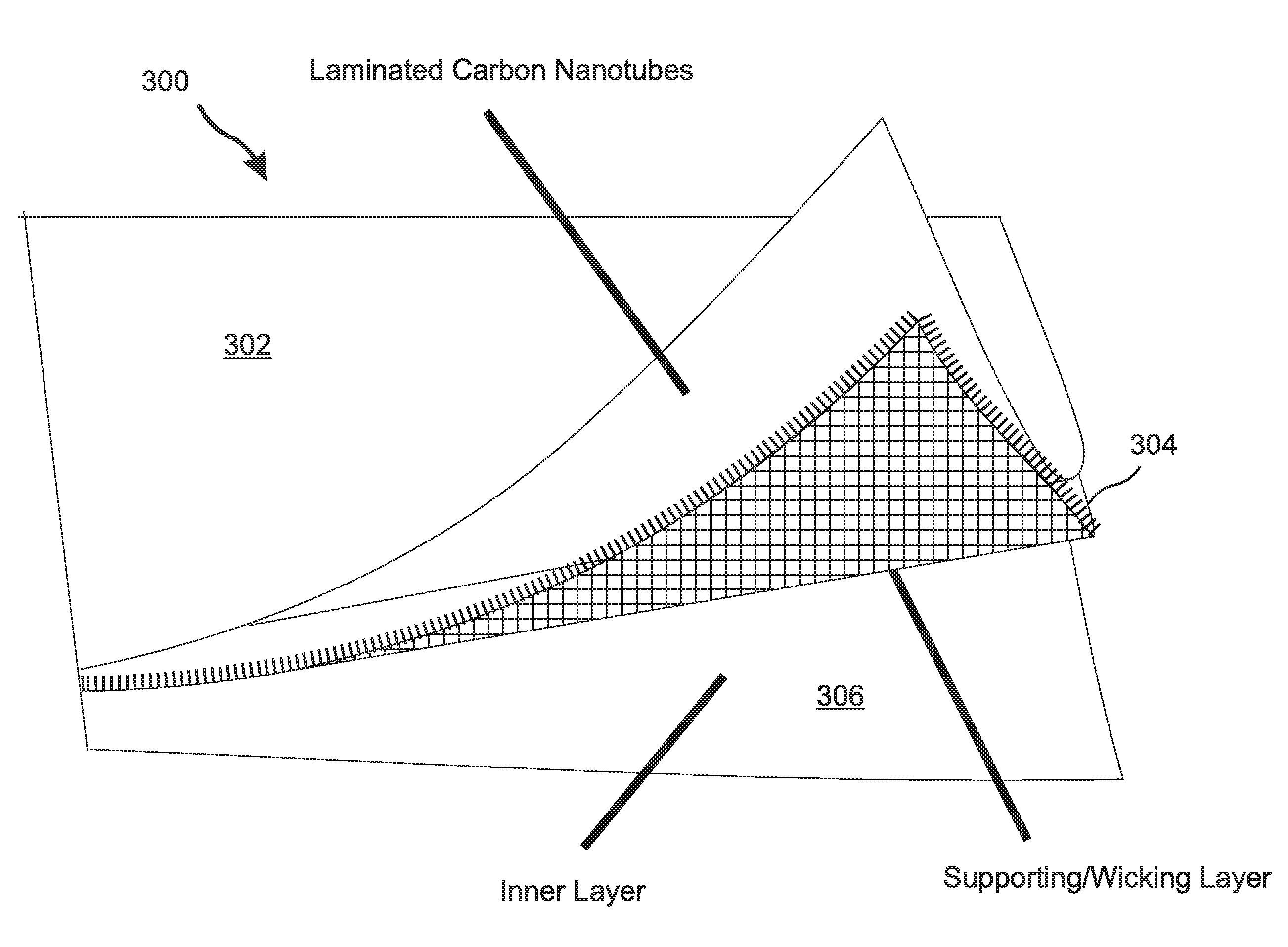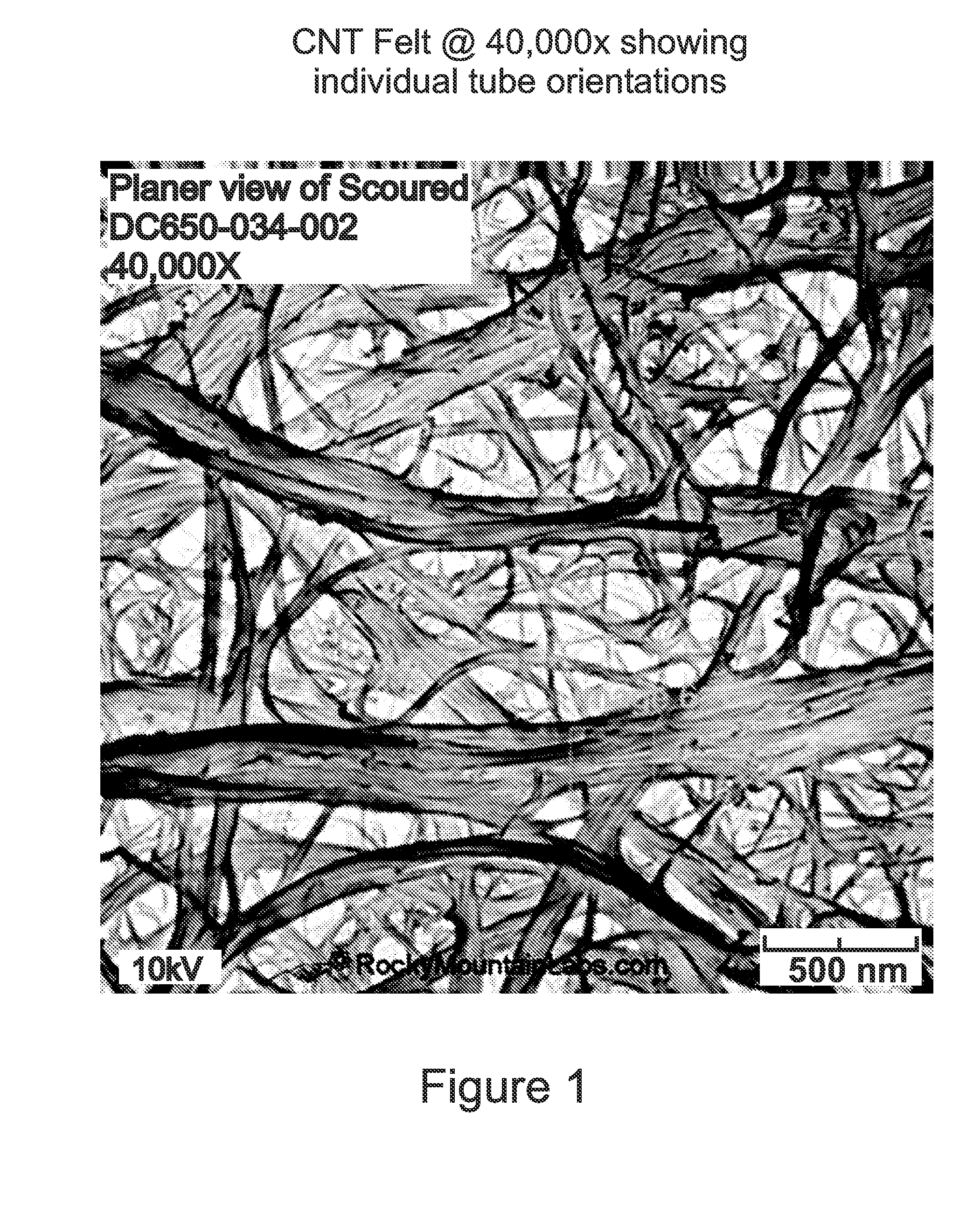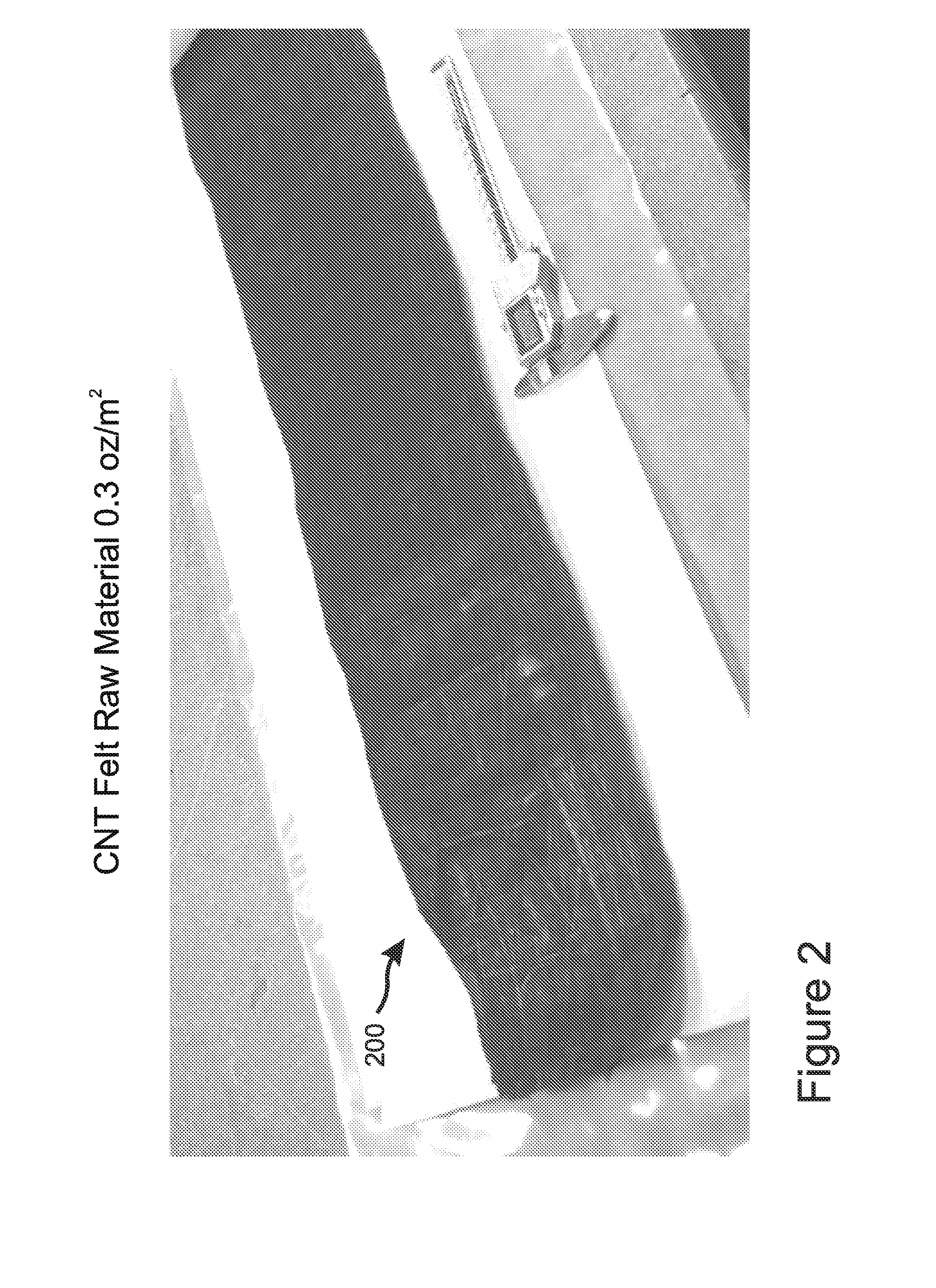Breathable chembio protection fabric with carbon nanotube physical pathogen barrier
a technology of carbon nanotubes and protective fabrics, applied in the field of breathable che, can solve the problems of lack of competency, inability to mechanically apply as garment fabrics, and contaminates that reside on fiber surfaces, so as to avoid undue heat stress
- Summary
- Abstract
- Description
- Claims
- Application Information
AI Technical Summary
Benefits of technology
Problems solved by technology
Method used
Image
Examples
embodiment 300
[0068]With reference to FIG. 3, embodiments of the present invention include a supporting layer 304 which is physically cooperative with the CNT layer and increases the mechanical strength and durability of the CNT physical barrier layer 302. In the embodiment 300 of FIG. 3, the supporting layer 304 is sandwiched between two CNT barrier layers 302, 306.
[0069]In various embodiments, the fabric 300 of the present invention includes at least CNT physical barrier layer such as a layer of CNT felt 302 which is cooperative with a layer of wicking textile 304, this wicking layer 304 being sandwiched between the CNT layer 302 and an inner layer 306. The wicking textile 304 can support a chemically reactive layer so as to provide chemical protection against chemical and biological agents. The chemically reactive layer can be activated on demand by distributing a chlorinated solution through the wicking layer.
[0070]In some embodiments the inner layer 306 is another CNT barrier layer such as a...
embodiment 600
[0086]The embodiment 600 of FIG. 6A includes an outer layer of Nomex or Nylon 602 and an inner liner of Nomex 604, whereby these outer 602 and inner 604 layers provide additional structural strength while protecting the interior layers from abrasion. Between the outer and inner Nylon / Nomex layers 602, 604 are two CNT felt layers 606, 608 with an active chemistry wicking layer 610 sandwiched therebetween. In this embodiment, the two CNT layers 606, 608 are attached to each other by impermeable fluoropolymer seams 612 that enhance flexibility while preventing seam penetration by chemical and biological agents.
[0087]FIG. 6B is a perspective view of a fluoropolymer seam 612 formed between two sheets 606, 608 of CNT felt. The seams 612 of the embodiment of FIG. 6A and FIG. 6B divide the remainder of the fabric into cells 614 of CNT and wicking textile that provide both physical and reactively chemical CB protection while being air and moisture permeable. As discussed above, in various em...
PUM
| Property | Measurement | Unit |
|---|---|---|
| mechanical strength | aaaaa | aaaaa |
| shear strength | aaaaa | aaaaa |
| hydrostatic resistance | aaaaa | aaaaa |
Abstract
Description
Claims
Application Information
 Login to View More
Login to View More - R&D
- Intellectual Property
- Life Sciences
- Materials
- Tech Scout
- Unparalleled Data Quality
- Higher Quality Content
- 60% Fewer Hallucinations
Browse by: Latest US Patents, China's latest patents, Technical Efficacy Thesaurus, Application Domain, Technology Topic, Popular Technical Reports.
© 2025 PatSnap. All rights reserved.Legal|Privacy policy|Modern Slavery Act Transparency Statement|Sitemap|About US| Contact US: help@patsnap.com



